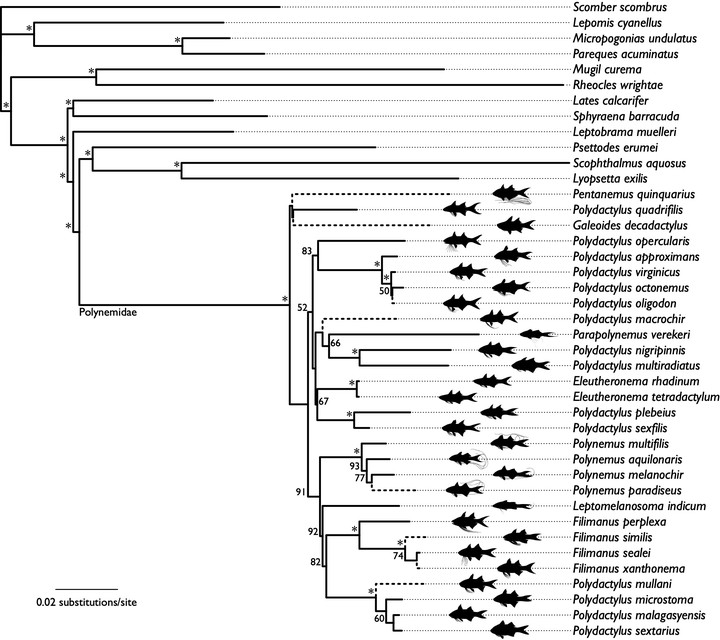 Figure 3
Figure 3
Abstract
Threadfins (Teleostei: Polynemidae) are a group of fishes named for their elongated and threadlike pectoral-fin rays. These fishes are commonly found in the world’s tropical and subtropical waters and are an economically important group for people living in these regions, with more than 100,000 tonnes harvested in recent years. However, we do not have a detailed understanding of polynemid evolutionary history such that these fishes can be monitored, managed, and conserved as an important tropical food source. Recent studies hypothesize at least one genus of threadfins is polyphyletic, and no studies have focused on generating a hypothesis of relationship for the Polynemidae using DNA sequences. In this study, we analyze a genomic dataset of ultraconserved-element and mitochondrial loci to construct a phylogeny of the Polynemidae. We recover the threadfins as a clade sister to flatfishes, with the most taxonomically rich genus, Polydactylus, being resolved as polyphyletic. When comparing our dataset to data from previous studies, we find that a few recent broad-scale phylogenies of fishes have incorporated mislabeled, misidentified, or chimeric terminals into their analyses, impacting the relationships of threadfins they recover. We highlight these problematic sequences, providing revised identifications based on the data sequenced in this study. We then discuss the intrarelationships of threadfins, highlighting morphological or ecological characters that support the clades we recover.
Almetric and Dimension badges